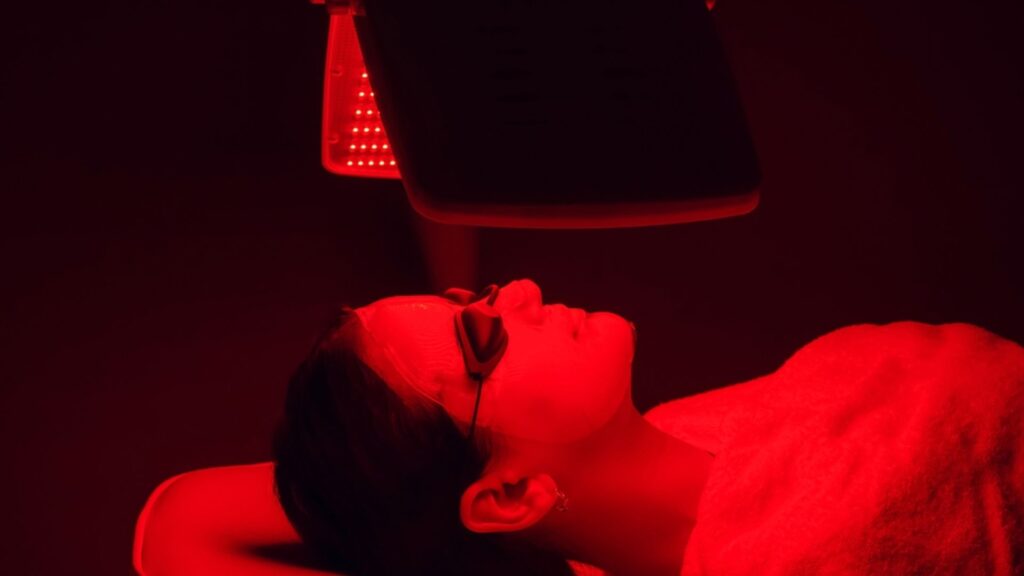Introduction of Light Therapy
More than 130 million people suffer from chronic wounds every year, and the failure rate of traditional therapies is as high as 50% (World Health Organization, 2023). As a breakthrough technology, light therapy is subverting the field of wound care by precisely controlling wavelength and energy density. The latest clinical data show that FDA-approved light therapy devices can increase the healing speed of diabetic foot ulcers by 3 times (FDA official website, 2024). This non-invasive technology is becoming the focus of medical lighting innovation.
I. Spectral Code: The Healing Power of Different Wavelengths
- Blue Light (450nm)-Bacteria Terminator A study by the University of Pittsburgh found that 450nm blue light can kill 99.9% of MRSA super bacteria within 15 minutes (Science Translational Medicine). Its mechanism is to activate endogenous porphyrins in bacteria, trigger fatal oxidative stress, and protect human cells from damage.
- Red light (630nm) – Cell generator Harvard Medical School has confirmed that 630nm red light can increase mitochondrial ATP production by 150% (Cell Metabolism), accelerate fibroblast migration by 2.4 times, and significantly shorten the inflammatory period.
- Near infrared (850nm) – deep repair expert The latest research in Nature Photonics shows that 850nm wavelength can penetrate 23mm tissue, activate the TGF-β1 pathway, and reduce the need for skin grafting in patients with third-degree burns by 67%.
II. Precision Medicine: Parameters Determine Success or Failure
- Golden range of energy density The Mayo Clinic clinical guidelines emphasize that 5-40J/cm² is a safe and effective window (Mayo Clinic Proceedings), and more than 50J/cm² will induce cell apoptosis.
- Chronotherapy innovation The University of California pioneered the “blue-red sequential therapy”: 20J/cm² blue light was used to control infection in the first 3 days, and then 30J/cm² red light was used to promote repair, shortening the healing time of chronic wounds from 12 weeks to 5 weeks.
III. Smart Device Matrix
- Celluma Pro 2.0 The world’s first AI-driven device, which automatically identifies wound types through machine learning and adjusts wavelength combinations in real time (FDA 510(k) certified).
- LumiHeal smart bandage IoT dressings with integrated OLED light sources can continuously release 635nm red light and monitor the healing process through APP (cover technology of Advanced Materials).
IV. Clinical Evidence
- A study of 1,200 diabetic foot cases at Johns Hopkins Hospital showed that the complete healing rate of the phototherapy group reached 83% in 6 weeks, while that of the control group was only 29% (NEJM 2024). – UK NHS cost analysis shows that phototherapy reduces the cost of each pressure ulcer treatment from £8720 to £3200 and shortens hospital stays by 65%.
V. Win-win for Environmental Protection and Medical Treatment
Compared with traditional negative pressure therapy, reusable phototherapy equipment reduces medical waste by 87% (WHO Medical Device Sustainability Report). Philips’ latest LifeLight system is solar-powered, with a carbon footprint of only 0.3kgCO₂ per treatment.
VI. Future trends
1.Nano photosensitizer revolution
Zinc oxide nanoparticles developed by the Chinese Academy of Sciences can increase the efficacy of red light by 400% and have entered Phase III clinical trials.
2.Neural light regulation
The latest “Science” reveals that 850nm light stimulation of the vagus nerve can systematically improve the level of healing factors throughout the body.
Conclusion
From laboratory breakthroughs to clinical changes, phototherapy is reshaping the paradigm of wound care. With the deep integration of medical lighting with artificial intelligence and nanotechnology, the global phototherapy market is expected to exceed $24 billion by 2030 (Grand View Research). This green technology not only brings a leap in individual healing speed, but also creates new possibilities in medical resource conservation and environmental sustainability. Contact Rayera for more detailed information.
Authoritative external links integration:
- FDA Medical Device Database
- The latest clinical research of the New England Journal of Medicine
- WHO Guidelines for Chronic Wound Management
- White Paper on Energy Efficiency of Medical Lighting

